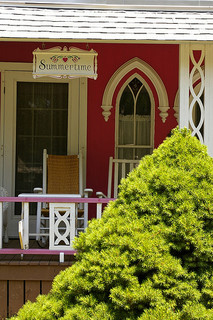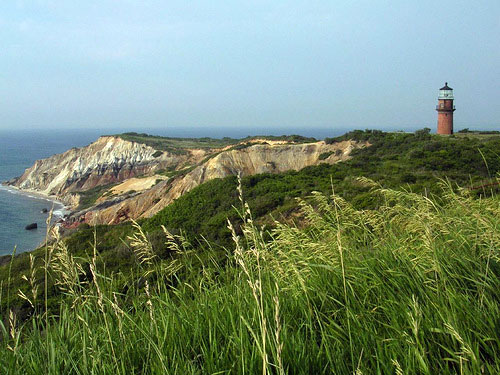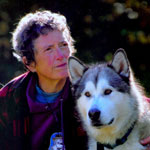Theme Essay by Susanna J. Sturgis
The Challenges of Writing About a Place that Everyone "Knows"
Pristine beaches, ferryboats, picturesque lighthouses, gingerbread cottages, celebrities: Martha’s Vineyard, off the coast of Cape Cod in Massachusetts, has become an American icon. Two recent U.S. presidents have vacationed here. Inevitably, their baggage includes a horde of journalists, and, just as inevitably, those journalists have a lot of downtime.
When the presidents show up, it’s always August. Upwards of 100,000 people swell the population of a place that in winter is home to fewer than 20,000. It’s not hard for those idle reporters to find people to interview, events to attend, stories to tell.
As a result, the reading and TV-watching public knows what Martha’s Vineyard looks like in August to reporters who come from somewhere else. But to those of us who’ve lived here awhile, Martha’s Vineyard is multiple, multifarious, multilayered, and complex. In summer, the Vineyard of those who live and work here year-round is barely visible to the untrained eye.
Not quite a year after President Clinton’s first visit in 1993, I spotted a short New Yorker item about the poet and fiction writer Grace Paley. Asked if she would write about what was then going on in South Africa, Paley said that she might have a character comment on it. But, she added, “If your feet aren’t in the mud of a place, you’d better watch where your mouth is.”
This was the seed of my Martha’s Vineyard novel, The Mud of the Place.
Other people’s feet were deeper in the mud of this place than mine, but they weren’t writers. I am a writer, and my feet were sinking deeper year by year. If not me, who? But if me—how?
How to bring to life a place that many people think they know but don’t really? How to make readers believe in a Martha’s Vineyard where no celebrities, presidents, or literary lions clink glasses at oceanfront cocktail parties?
In short, I had to build my Martha’s Vineyard pretty much from scratch.
This is what science fiction and fantasy writers do. For them, world-building is an essential skill. Their stories are often set in places that don’t exist, whose geography and culture and even physical laws aren’t what their readers are used to. A vividly evoked place makes it easy to suspend disbelief, to accept as real things like faster-than-light starship drives and telepathic communication. Often the place plays a key role in the story.
I don’t write science fiction or fantasy, but I’d been immersed in it for years as a reader, reviewer, anthology editor, and convention panelist. And Melissa Scott’s Conceiving the Heavens: Creating the Science Fiction Novel came out just as I was buckling down to writing my own real-world novel. It was never far from my side as I worked.
By that point, I’d been living and working year-round on Martha’s Vineyard for 13 years. I had plenty of raw material, so I didn’t have to invent a world; I did have to shape what I knew into a novel that offered readers a glimpse of backstage Martha’s Vineyard while telling a good story.
I started with the kind of questions a fantasy or science fiction writer asks: How does my world work? What kind of people live there? How does the place affect the people—and vice versa?
With Grace Paley’s counsel in mind, I chose to set my novel in mud season: those bleak, unglamorous weeks in early to mid spring when the ground is thawing, rain is often falling, and the island’s many dirt roads turn to, well, mud.
Chapter 2 opens with reporter Leslie Benaron slip-sliding her way on foot to a late-night house fire, pen and notebook in hand:
“Road, hah! Call this a road? Only on Martha’s Vineyard would this string of ruts pass for a road…. It wasn’t enough that mud season was still upon them the third week of April; runoff from the hoses was gouging deeper and deeper tracks on either side of the slippery median mound. And was Leslie wearing her duck shoes? She was not.
Leslie has been called away from a dinner date. She’s wearing elegant black ankle boots with very thin soles—totally unsuited to the mud of this place.
If a science fiction writer set out to create an intergalactic vacation resort, she might well come up with something like summer Martha’s Vineyard. Then she might ask: But how about the people who live there? Resorts are staffed by people who aren’t on vacation.
In summer, year-round Vineyarders are often found working two or three jobs, hosting a succession of houseguests, supervising kids out of school—and grocery shopping when most vacationers are at the beach, and the stores and roads are less likely to be jammed past capacity.
 The seasonal cycle lies at the heart of a major year-round problem: housing. Between June 1 and September 30, a modest dwelling commands a much higher rent than a landlord would dream of charging in November or March. One result is the “winter rental.” These are cheaper and easier to find than year-round rentals, but there’s a catch: Tenants have to find somewhere else to live in the summer.
The seasonal cycle lies at the heart of a major year-round problem: housing. Between June 1 and September 30, a modest dwelling commands a much higher rent than a landlord would dream of charging in November or March. One result is the “winter rental.” These are cheaper and easier to find than year-round rentals, but there’s a catch: Tenants have to find somewhere else to live in the summer.
So one of the first questions I asked my characters was “Where do you live, and how do you pay for it?”
From their answers, I spun several threads of plot. The house that burns down in Chapter 2 has recently been vacated by Alice, a single mother, and her young son. Reporter Leslie overhears the irate owner, a new seasonal resident, demanding that the police arrest Alice for arson. Leslie immediately smells a good story.
The story smells even better when Leslie learns that Alice’s attempts to move off-island have been repeatedly stymied by her volatile ex-husband, and that the new owner’s real estate broker may have been harassing Alice to get her out of the house before summer.
When I asked Leslie where she lived, she hedged at first. Leslie, who fled a high-stress New York advertising job a few years earlier and at age 34 still isn’t sure what to do next, was embarrassed to admit that she’s living rent-free in the house of her parents. They are affluent summer residents, and her father is an eminent journalist. This spawned a plot-driving ambition on the part of his daughter: how proud he will be if Leslie can only find Alice and tell her story.
Late one morning, Leslie escapes the deadline-crazed newsroom to get a bagel and coffee. At the coffee shop, she spots her friend Shannon, a full-time graphic designer and part-time volunteer women’s advocate:
“For Main Street, Vineyard Haven, on a Tuesday morning, Shannon looked positively neat. Nowhere near as presentable, though, as her companion, who was wearing, believe it or not, a dress. A dress and heels. Well, well, well, thought Leslie; welcome to the secret life of Shannon the Recluse.
Leslie doesn’t know that the well-dressed young woman is the very Alice she’s trying so hard to find. This is one of several incidents in the book where the truth is out in plain sight, but only those whose feet are in the mud of the place know what they’re seeing.
One of my early-draft readers said, “I don’t know these people, but I feel like I could run into any of them at the grocery store.”
With that, I knew I was on the right track.
Publishing Information
- The Mud of the Place by Susanna J. Sturgis (Speed-of-C Publications, 2008).
- "Storyteller" (Grace Paley note under "Above and Beyond"), New Yorker, May 16, 1994.
- Conceiving the Heavens: Creating the Science Fiction Novel by Melissa Scott (Heinemann, 1997).
Art Information
- “Gay Head Martha’s Vineyard” © Rob McCready; Creative Commons license
- “Gingerbread House” © Paul L; Creative Commons license
Susanna J. Sturgis is the author of The Mud of the Place. She blogs about year-round Martha's Vineyard at Squatter's Speakeasy and makes her living as a freelance editor.
For more information about her, along with photos of her terminally photogenic canine roommate, Travvy, check out Susanna's website.


